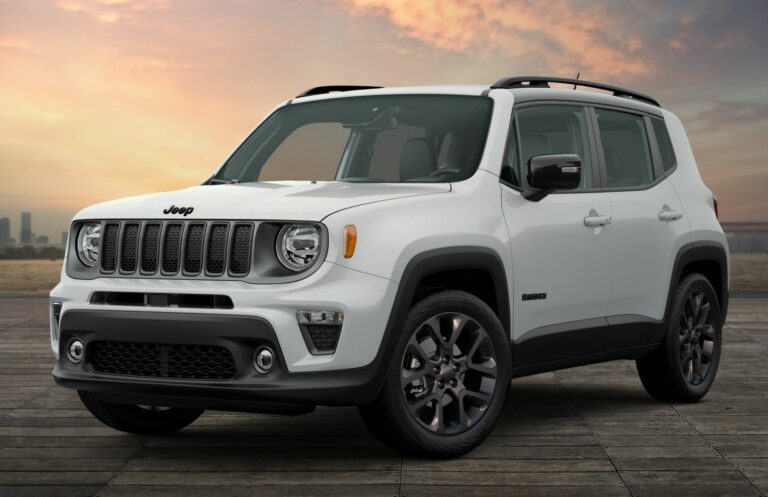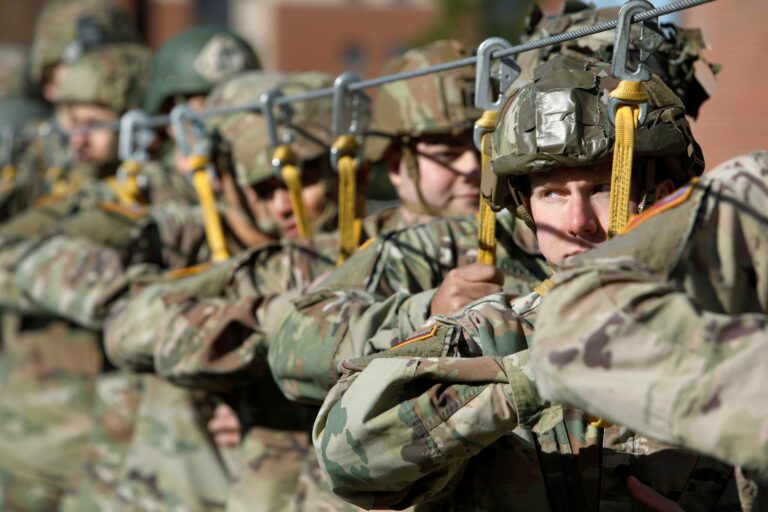1984 Jeep Wrangler For Sale: Unraveling the Myth and Discovering the Legend
1984 Jeep Wrangler For Sale: Unraveling the Myth and Discovering the Legend /jeeps.truckstrend.com
When you search for "1984 Jeep Wrangler For Sale," you’re likely embarking on a quest for a piece of automotive history that predates the "Wrangler" nameplate itself. This search term, while popular, points to a common misconception: the Jeep Wrangler, as we know it, wasn’t introduced until 1987. In 1984, Jeep was producing its venerable CJ series, specifically the iconic CJ-7 and the longer-wheelbase CJ-8 Scrambler. These are the rugged, go-anywhere vehicles that laid the groundwork for the modern Wrangler and are what enthusiasts are truly seeking when they type "1984 Jeep Wrangler For Sale" into their search bar.
This article serves as a comprehensive guide for anyone looking to understand, find, evaluate, and potentially purchase a 1984 Jeep CJ. We’ll clarify the historical context, explore the appeal of these classic off-roaders, provide a detailed buyer’s checklist, and offer practical advice to navigate the unique challenges and rewards of owning a piece of Jeep’s legendary past.
1984 Jeep Wrangler For Sale: Unraveling the Myth and Discovering the Legend
The Legacy of 1984: Understanding the CJ-7 and CJ-8
The 1984 model year falls squarely within the production run of the Jeep CJ (Civilian Jeep) series, a direct descendant of the original Willys MB military Jeep. By 1984, the CJ-7 was the primary short-wheelbase offering, celebrated for its perfect balance of maneuverability and stability. The CJ-8 Scrambler, on the other hand, offered a stretched wheelbase and a small pickup bed, making it a unique and highly sought-after variant for those needing more utility or simply appreciating its distinctive profile.
These CJs represent the essence of classic Jeep design: open-air driving, solid axles, a robust frame, and a no-nonsense approach to off-road capability. They are simpler mechanically than their modern counterparts, relying on tried-and-true components that, while not always refined, are generally durable and repairable. The 1984 models were part of the final years of CJ production, making them significant as a bridge between the early, utilitarian Jeeps and the more refined (but still rugged) YJ Wrangler that would follow.
Why Seek a 1984 CJ? The Appeal and Benefits
The allure of a 1984 Jeep CJ extends far beyond mere transportation. It’s about owning a slice of Americana, embracing a unique driving experience, and tapping into a vibrant community of enthusiasts.
- Nostalgia and Classic Appeal: For many, the CJ represents a bygone era of pure, unadulterated adventure. Its classic lines and open-air design evoke a sense of freedom and rugged individualism that modern vehicles often lack.
- Simplicity and Maintainability: Without complex computer systems or myriad sensors, CJs are relatively easy to work on for the average DIY mechanic. Parts, especially aftermarket components for common upgrades and repairs, are widely available.
- Unmatched Off-Road Prowess: The CJ’s short wheelbase (for the CJ-7), excellent approach/departure angles, and robust 4×4 system make it an incredibly capable off-road machine, even by today’s standards.
- Customization Potential: CJs are a blank canvas for customization. From mild lifts and tire upgrades to full engine swaps and elaborate expedition builds, the aftermarket support is immense, allowing owners to tailor their Jeep to their exact needs and desires.
- Investment Potential: Well-preserved, original, or professionally restored CJs, particularly the rarer CJ-8 Scrambler, have seen their values appreciate significantly, making them a potential investment as well as a passion project.
- The "Analog" Driving Experience: Driving a CJ is a visceral experience. You feel the road, hear the engine, and are intimately connected to your surroundings. It’s a stark contrast to the insulated, digitally-assisted driving of modern vehicles.


What to Look For: A Buyer’s Checklist for a 1984 Jeep CJ
Purchasing a vintage vehicle like a 1984 CJ requires careful inspection and realistic expectations. Rust, previous modifications, and deferred maintenance are common issues.

-
Rust, Rust, Rust: This is the absolute biggest enemy of any CJ.
- Frame: Inspect the frame rails thoroughly, especially near the spring hangers, steering box, and body mounts. Look for patches, excessive pitting, or cracks.
- Body Tub: Check the floorboards (especially under the pedals and seats), rocker panels, wheel wells, and the area around the windshield frame. Many CJs have replacement tubs or significant patch panels.
- Fenders & Hood: Check for rust around the headlight buckets and fender wells.
- Doors & Tailgate: Look for rust at the bottom edges and hinges.
-
Engine: In 1984, the primary engine options were the 4.2L (258 cubic inch) AMC inline-six and the 2.5L (150 cubic inch) AMC inline-four. Many CJs have had engine swaps (common ones include AMC V8s, GM V8s, or even modern Jeep engines).
- Listen for odd noises: Knocks, ticks, or excessive valvetrain noise.
- Check for leaks: Oil, coolant, power steering.
- Smoke: Blue (oil), white (coolant), or black (fuel).
- Compression Test: Highly recommended if serious about a purchase.
-
Transmission & Transfer Case:
- Manual (T-4, T-5, SR-4, T-176): Check for smooth shifting, grinding, or popping out of gear.
- Automatic (TF999): Check for fluid condition, smooth shifts, and slipping.
- Transfer Case (Dana 300): Engage 4-high and 4-low. Listen for grinding or clunking. Check for leaks.
-
Axles & Suspension:
- Axles: Dana 30 front, AMC 20 rear (common for CJ-7/8). Look for leaks at the differential covers and axle seals.
- Lift Kits: Inspect the quality of the lift kit installation. Look for worn bushings, bent components, or improper alignment.
- Steering: Check for excessive play in the steering wheel, worn tie rod ends, drag link, and ball joints.
-
Electrical System: Often a source of frustration. Check all lights, gauges, wipers, heater, and horn. Look for frayed wires, aftermarket wiring hacks, or corroded terminals.
-
Interior & Top:
- Seats: Check for tears, rips, and frame integrity.
- Dashboard: Look for cracks, missing gauges, or non-functional components.
- Soft Top/Hard Top: Inspect for rips, tears, clear window clarity, and proper fit. Hard tops are often more desirable for security and weather protection.
-
Documentation: A clear title is essential. Any service records or history of modifications are a huge plus.
The Buying Process: Finding Your 1984 CJ
Finding the right 1984 CJ takes patience and diligence.
-
Where to Look:
- Online Marketplaces: eBay Motors, Craigslist, Facebook Marketplace, and dedicated classic car sites (e.g., Hemmings, Bring a Trailer).
- Specialty Forums & Groups: Jeep CJ forums and Facebook groups are excellent for finding owner-sold vehicles and getting advice.
- Classic Car Dealers/Brokers: Often more expensive, but vehicles may be in better condition or professionally restored.
- Auctions: Can be risky unless you’re an experienced buyer and can thoroughly inspect the vehicle beforehand.
- Word-of-Mouth: Let friends and local mechanics know you’re looking.
-
Setting a Budget: Be realistic. A project vehicle can be had for a few thousand dollars, but a turn-key, well-maintained driver will be significantly more. A fully restored example can command top dollar. Remember to factor in potential repair costs, registration, and insurance.
-
Pre-Purchase Inspection (PPI): If you’re serious about a vehicle, especially one from a private seller, pay a qualified mechanic (preferably one familiar with vintage Jeeps) to perform a thorough PPI. This can save you from costly surprises down the road.
-
Negotiation: Be prepared to negotiate. Use any identified issues from your inspection as leverage. Don’t be afraid to walk away if the price isn’t right or the seller is unwilling to address concerns.
-
Test Drive:
- Listen for unusual noises from the engine, transmission, and drivetrain.
- Check for proper braking and steering response.
- Feel for vibrations at different speeds.
- Test 4WD engagement.
- Pay attention to how it handles on various road surfaces.
Ownership Considerations and Potential Challenges
Owning a 1984 CJ is a rewarding experience, but it’s not without its quirks.
- Parts Availability: While original body panels can be hard to find in pristine condition, the aftermarket is robust for almost all mechanical components, reproduction body tubs, and upgrade parts. You won’t be stranded due to lack of parts.
- Maintenance: CJs are relatively simple but demand regular attention. Be prepared for routine maintenance and occasional repairs. A basic understanding of mechanics is a huge asset.
- Safety: CJs lack modern safety features like airbags, ABS, crumple zones, and advanced driver-assistance systems. They offer minimal protection in a collision. Drive defensively and be aware of your surroundings.
- Fuel Economy: Don’t expect great gas mileage. The 4.2L I6 is a workhorse but thirsty, typically yielding 12-16 MPG.
- Comfort: These are not luxury vehicles. The ride is rugged, interior noise levels are high, and amenities are sparse. It’s part of the charm, but not for everyone.
- Legal & Registration: Check your local laws regarding classic vehicle registration, emissions (if applicable), and insurance. Some states offer special plates or exemptions for vintage vehicles.
1984 Jeep CJ For Sale: Estimated Price Guide
Please note: Prices for vintage Jeeps vary wildly based on condition, originality, modifications, engine, location, and the specific model (CJ-7 vs. CJ-8). The CJ-8 Scrambler typically commands a significant premium due to its rarity. These are rough estimates.
| Condition Category | 1984 Jeep CJ-7 (Estimated Range) | 1984 Jeep CJ-8 Scrambler (Estimated Range) | Description |
|---|---|---|---|
| Project Vehicle | $3,000 – $8,000 | $8,000 – $18,000 | Significant rust, non-running or needs major mechanical overhaul, incomplete. Requires extensive restoration. |
| Driver Quality | $8,000 – $18,000 | $18,000 – $35,000 | Runs and drives, roadworthy, but likely has cosmetic flaws, some rust, and needs various repairs or maintenance. Can be enjoyed immediately. |
| Well-Maintained | $18,000 – $30,000 | $35,000 – $60,000+ | Good condition mechanically and cosmetically. Minor flaws possible. Ready for regular use, possibly with minor upgrades. |
| Restored/Show | $30,000 – $50,000+ | $60,000 – $100,000+ | Frame-off restoration, excellent paint, new interior, rebuilt mechanicals. Often better than new. For collectors or show. |
Disclaimer: These prices are estimates and subject to change based on market demand and specific vehicle details.
Frequently Asked Questions (FAQ) about 1984 Jeep CJs
Q: Is a 1984 Jeep Wrangler a good first car?
A: No, a 1984 Jeep CJ (what people mean by "1984 Wrangler") is generally not recommended as a first car, especially for new drivers. They lack modern safety features, can be challenging to drive due to their rugged nature, and require more maintenance than a modern vehicle.
Q: How much does a 1984 Jeep Wrangler (CJ) cost?
A: Prices vary widely depending on condition, from $3,000 for a major project to over $100,000 for a fully restored CJ-8 Scrambler. Refer to the price guide above for estimated ranges.
Q: What’s the difference between a Jeep CJ and a Jeep Wrangler?
A: The CJ (Civilian Jeep) series was produced from 1945 to 1986. The Wrangler (YJ) replaced the CJ in 1987. While they share a spiritual lineage and similar styling, the Wrangler introduced a wider stance, square headlights (YJ), and more modern amenities. The CJ is the direct predecessor.
Q: Are parts hard to find for a 1984 CJ?
A: Generally, no. While some specific original parts can be rare, the aftermarket support for CJs is excellent. You can find almost any mechanical part, many body panels (often reproduction), and countless upgrade components.
Q: Can a 1984 CJ be a daily driver?
A: It’s possible, but challenging. CJs are loud, uncomfortable by modern standards, lack climate control sophistication, and offer poor fuel economy. They require dedication and a tolerance for an unrefined ride. Many owners use them as weekend toys or secondary vehicles.
Q: What engines were available in 1984 CJs?
A: From the factory, the 1984 CJ-7 and CJ-8 were primarily offered with the 4.2L (258 cubic inch) AMC inline-six-cylinder engine and the 2.5L (150 cubic inch) AMC inline-four-cylinder engine. V8 engines were not factory options in 1984, but many CJs have had V8 swaps (commonly AMC 304/360 or various GM engines).
Conclusion
The search for a "1984 Jeep Wrangler For Sale" is, in reality, a pursuit of the legendary 1984 Jeep CJ-7 or CJ-8 Scrambler. These vehicles represent the raw, unfiltered essence of the Jeep brand – rugged, capable, and undeniably iconic. While they demand a discerning eye during purchase and a commitment to their unique maintenance needs, the rewards of owning a piece of this automotive heritage are immense.
For the right enthusiast, a 1984 CJ isn’t just a vehicle; it’s a statement, an adventure waiting to happen, and a tangible connection to the storied history of off-roading. With careful research, a thorough inspection, and a realistic understanding of vintage vehicle ownership, you can find your perfect classic Jeep and embark on a journey that’s truly one-of-a-kind.





